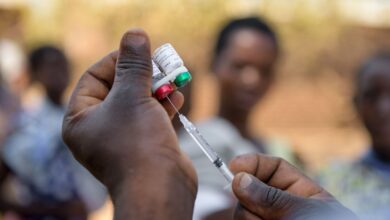How long is the incubation period for rubella?
The rubella or German measles virus only occurs in humans. Anyone who becomes infected can develop rubella after a while. How long this incubation period is and what risk it entails.

Experts refer to the incubation period as the period of time between infection with a pathogen and the onset of the disease. Depending on the pathogen, this can vary greatly. Rubella has an incubation period of 14 to 21 days.
Typically, a so-called droplet infection leads to rubella. The infection occurs through fine virus-containing saliva droplets that infected people cough up, sneeze out or secrete when they speak. The droplets spread through the air, making them easy for other people to inhale.
If the rubella virus enters the airways in this way, it first infects the lymphatic tissue of the nasopharynx. Strictly speaking, the incubation period for rubella begins when the virus has entered cells after its transmission in order to multiply.
After initially multiplying in the nasopharynx, the rubella virus spreads to the regional lymph nodes. This is why rubella can initially cause swollen lymph nodes and cold-like early symptoms after the incubation period has expired.
About eight days after infection, the rubella virus can finally be detected in the blood: experts refer to this as viremia. The virus can spread throughout the body via the blood, also reaching the skin. The skin rash that is typical of rubella then forms: one to four days after the end of the incubation period, small, pale red spots appear, which usually spread from the face and disappear again one to three days later.
In children, the rash is often the only sign of rubella, while in adults the incubation period often ends with the onset of early symptoms. However, half of those infected develop no recognizable symptoms.
Risk of infection often unrecognized
The consequences of rubella during pregnancy are particularly serious. Because then the virus can be transmitted to the unborn child via the placenta and severely damage it. Pregnant women who are not immune to rubella should therefore avoid any contact with infected people while they are contagious.
The problem with this is that rubella is already contagious during the incubation period: the risk of infection begins seven days before the rash appears and lasts for up to seven days afterwards. In addition, rubella can be transmitted even if it is completely inconspicuous. The rubella virus often spreads through people who are unaware of their infection. Vaccination is the only adequate protection.

